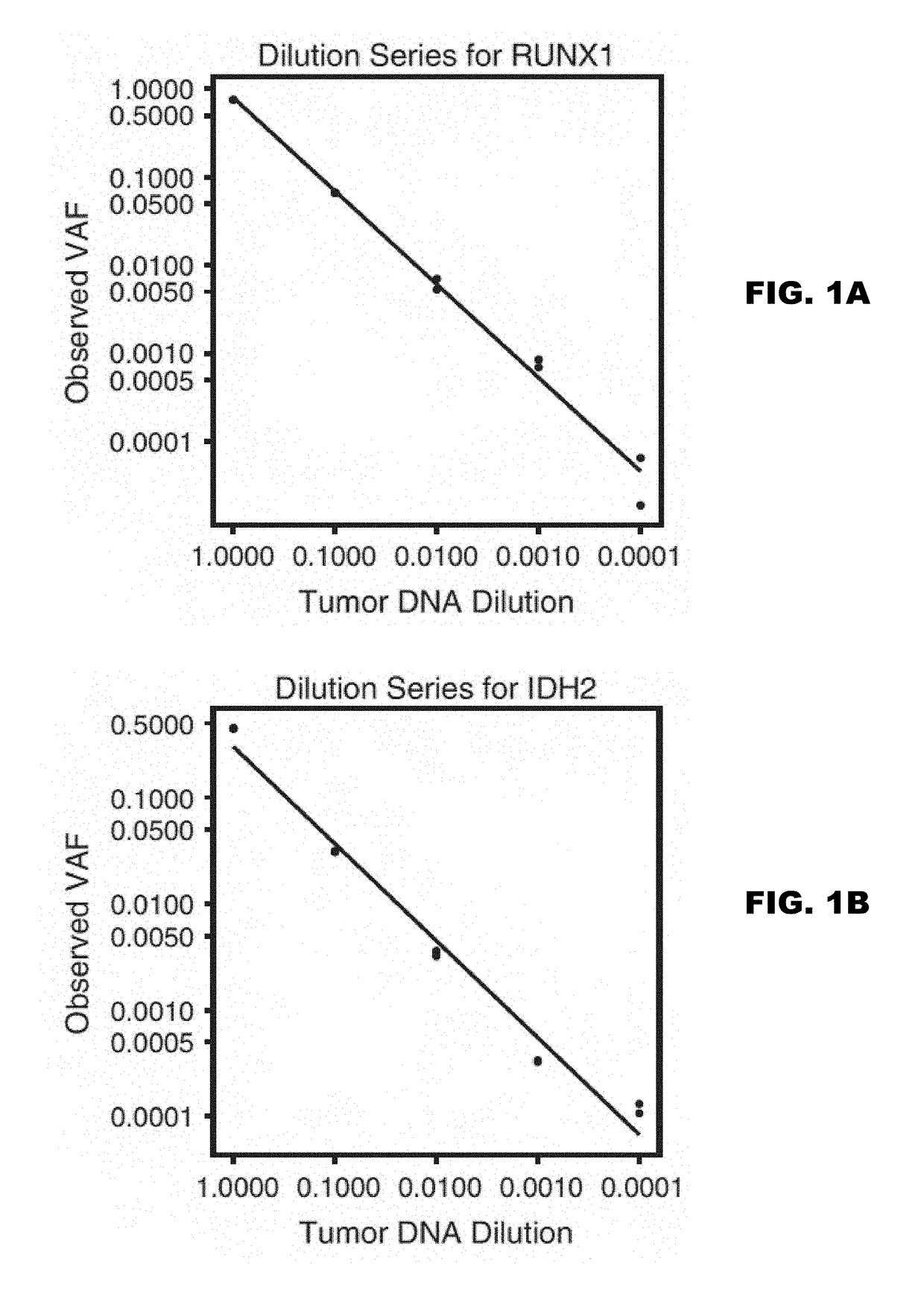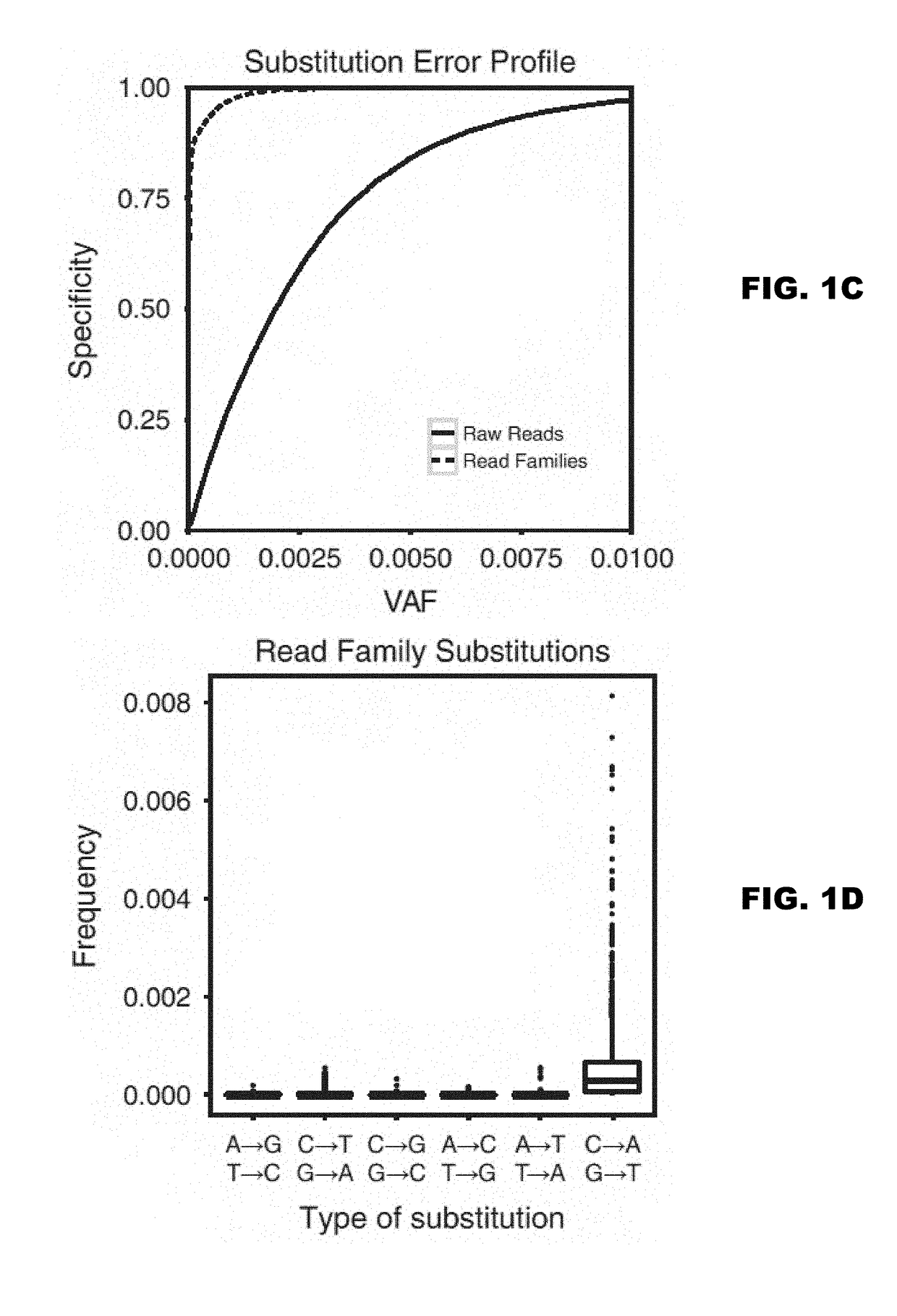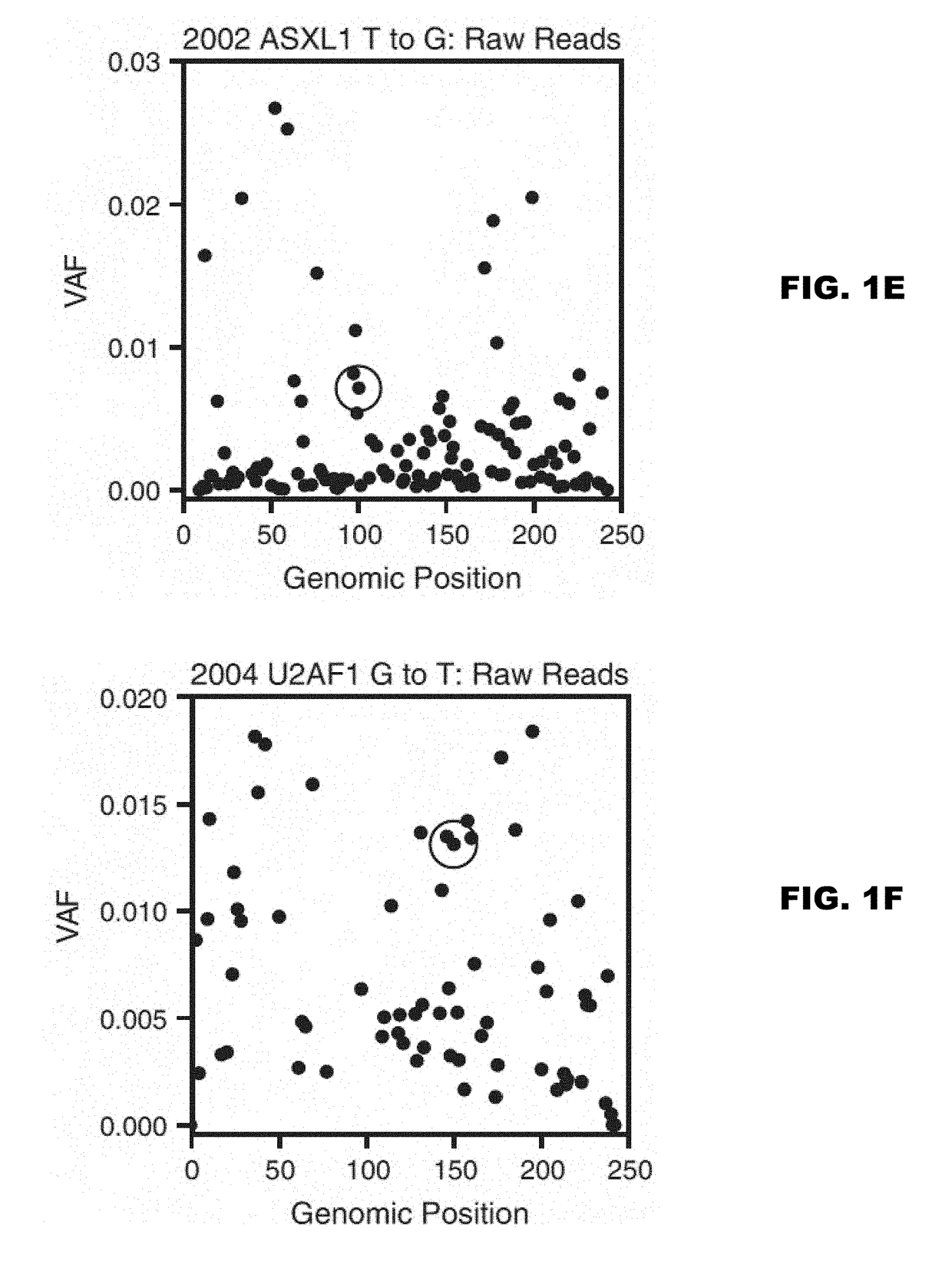Detection of rare sequence variants, methods and compositions therefor
a rare sequence variant and detection method technology, applied in the field of error corrected sequencing, can solve the problems of 1% error rate, inability to detect low-frequency variants, and inability to isolate single-base mutations in a small population of cells with technical sequencing errors,
- Summary
- Abstract
- Description
- Claims
- Application Information
AI Technical Summary
Benefits of technology
Problems solved by technology
Method used
Image
Examples
example 1
References for Example 1
[0102]1 Holstege H, Pfeiffer W, Sie D, Hulsman M, Nicholas T J, Lee C C et al. Somatic mutations found in the healthy blood compartment of a 115-yr-old woman demonstrate oligoclonal hematopoiesis. Genome Res 2014; 24: 733-742.[0103]2 Walter M J, Shen D, Ding L, Shao J, Koboldt D C, Chen K et al. Clonal architecture of secondary acute myeloid leukemia. N Engl J Med 2012; 366: 1090-1098.[0104]3 Welch J S, Ley T J, Link D C, Miller C A, Larson D E, Koboldt D C et al. The Origin and Evolution of Mutations in Acute Myeloid Leukemia. Cell 2012; 150: 264-278.[0105]4 Schmitt M W, Kennedy S R, Salk J J, Fox E J, Hiatt J B, Loeb L A. Detection of ultra-rare mutations by next-generation sequencing. Proc Natl Acad Sci USA 2012; 109: 14508-14513.[0106]5 Kinde I, Wu J, Papadopoulos N, Kinzler K W, Vogelstein B. Detection and quantification of rare mutations with massively parallel sequencing. Proc Natl Acad Sci USA 2011; 108: 9530-9535.[0107]6 Godley L A, Larson R A. Thera...
example 2
ng in AML Using Error-Corrected Sequencing
[0124]In acute myeloid leukemia (AML), minimal residual disease (MRD) testing following treatment is accomplished using multiparameter flow cytometry, which targets clonal cell surface markers; or qPCR, which targets leukemia-associated chromosomal translocations. While both methods provide prognostic information to a detection limit of 1:10,000 cells, these methods are useful in only a subset of leukemia patients1-3. Conversely, leukemia-specific somatic mutations occur in virtually every case of AML and present a potential target for residual disease assessment4,5. Our goal is to develop a sequencing-based platform to detect rare leukemic cells by their unique somatic mutation profile. Currently, next-generation sequencing is not sensitive enough to detect rare somatic mutations due to a 1% error rate. Fortunately, we have adapted methods for error-corrected sequencing (ECS) to circumvent this limitation6-9. Here, we have extended these me...
example 3
uSight Myeloid Panel and ECS Protocol in a Clinical Study of Healthy Individuals
[0128]In collaboration with the Nurses Healthy Study, 20 healthy elderly individuals were enrolled to examine the clinical possibilities of the TruSight Myeloid panel and ECS methodology. Paired buffy coat samples were banked 10 years apart. The average age at collection of the first sample was 57.1 years and the average age at collection of the second sample was 68.5. Samples were prepared in duplicate (80 libraries total) using the Illumina TruSight Myeloid panel and the ECS protocol. The samples were sequence on 10 NextSeq High Output (PE150) runs. Table 7 presents a summary of the sequencing results. The output per run was ˜400M PE reads. Table 8 shows that the libraries appear to be mixed in equimolar ratios. There are approximately 3M read families per library. FIG. 10 shows that the amplicon coverage between replicates is correlated. FIG. 10A shows that two libraries sequenced on the same run (NHS...
PUM
| Property | Measurement | Unit |
|---|---|---|
| temperature | aaaaa | aaaaa |
| temperature | aaaaa | aaaaa |
| temperature | aaaaa | aaaaa |
Abstract
Description
Claims
Application Information
 Login to View More
Login to View More - R&D
- Intellectual Property
- Life Sciences
- Materials
- Tech Scout
- Unparalleled Data Quality
- Higher Quality Content
- 60% Fewer Hallucinations
Browse by: Latest US Patents, China's latest patents, Technical Efficacy Thesaurus, Application Domain, Technology Topic, Popular Technical Reports.
© 2025 PatSnap. All rights reserved.Legal|Privacy policy|Modern Slavery Act Transparency Statement|Sitemap|About US| Contact US: help@patsnap.com



